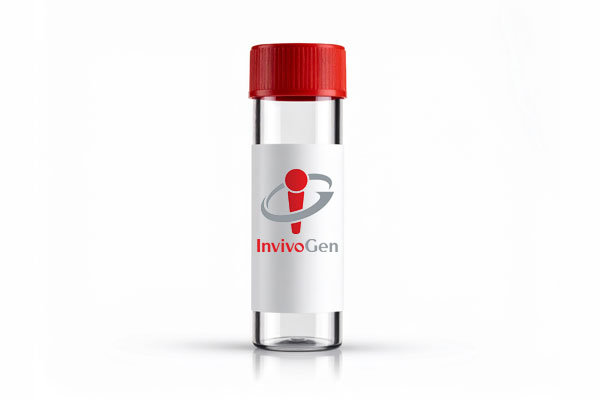
pNiFty3-A-SEAP
-
Cat.code:
pnf3-sp3
- Documents
ABOUT
pNiFty3-A-SEAP plasmid is composed of three key elements: the mouse interferon beta minimal promoter, five AP-1 transcription factor binding sites and a SEAP (Secreted alkaline phosphatase) reporter gene.
- The AP-1 transcription factor binding site: Activator protein 1 (AP-1) is a transcription factor activated by most PRRs. AP-1 is a heterodimeric complex composed of members of Fos, Jun and ATF protein families. AP-1 binds to the TPA responsive element (TRE: TGAG/CTCA)1. AP-1 activation in TLR signaling is mostly mediated by MAP kinases such as c-Jun N-terminal kinase (JNK), p38 and extracellular signal regulated kinase (ERK).
- IFN-β promoter: the mouse IFN-β minimal promoter comprises several positive regulatory domains that bind different cooperating transcription factors such as NF-kB, IRF3 and IRF72.
pNiFty3-A-SEAP plasmid is selectable with Zeocin™ in both E. coli and mammalian cells, and can be used to generate stable clones.
All products are for research use only, and not for human or veterinary use.
SPECIFICATIONS
Specifications
In vitro transfection
Plasmid construct is confirmed by restriction analysis and full-length open reading frame (ORF) sequencing.
CONTENTS
Contents
-
Product:pNiFty3-A-SEAP
-
Cat code:pnf3-sp3
-
Quantity:20 µg
1 ml of Zeocin™ (100 mg/ml)
Shipping & Storage
- Shipping method: Room temperature
- -20 °C
- Avoid repeated freeze-thaw cycles
Storage:
Caution:
Details
Minimal promoter
The proximal promoters are shorter than 500 bp and contain transcription factor binding sites. Upon stimulation in 293 cells, their expression level remains undetectable. With the addition of repeated TFBS, the proximal promoters become inducible by the appropriate stimulus and drive the expression of the reporter gene.
mIFNα promoter is the mouse interferon alpha 4 minimal promoter [1]. Transcription of mIFNα4 is mediated by a virus responsive element (VRE-A4) located in the promoter. VRE-A4 contains four cooperating DNA modules that
bind to IRF3 adn IRF7 [2]. Co-expression of IFNα-SEAP with constitutively activated IRF3 (saIRF3) or IRF7 (saIRF7) in HEK293 cells led to a strong increase in SEAP expression.
Reporter Gene
SEAP reporter gene: Secreted alkaline phosphatase (SEAP) is a reporter widely used to study promoter activity or gene expression. SEAP expression can be rapidly and readily measured in supernatants of transfected cells. SEAP levels can be evaluated qualitatively with the naked eye and quantitatively using SEAP detection media, such as HEK-Blue™ Detection system.
References:
1. Braganca J. et al., 1997. Synergism between multiple virus-induced factor-binding elements involved in the differential expression of interferon A genes. J Biol Chem. 272(35):22154-62.
2. Morin P. et al., 2002. Preferential binding sites for interferon regulatory factors 3 and 7 involved in interferon-A gene transcription. J Mol Biol. 316(5):1009-22.
DOCUMENTS
Documents
Technical Data Sheet
Safety Data Sheet
Certificate of analysis
Need a CoA ?



